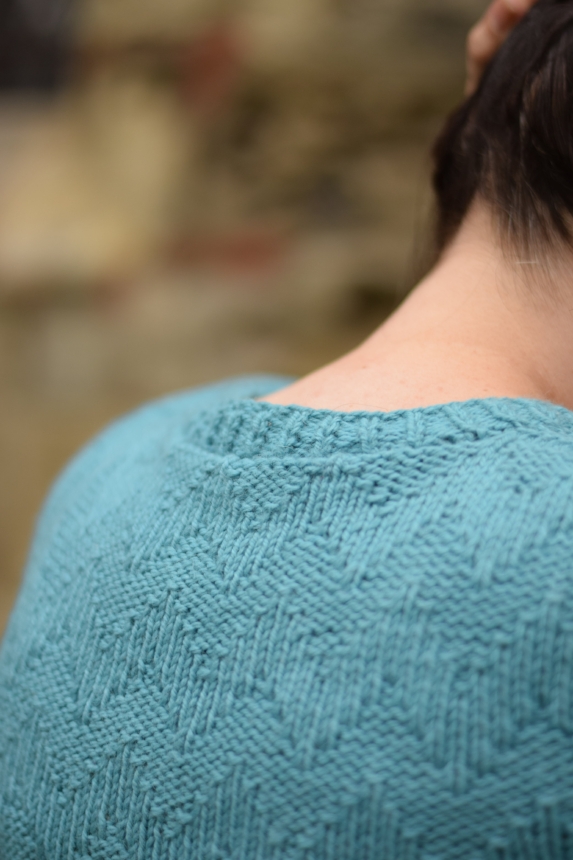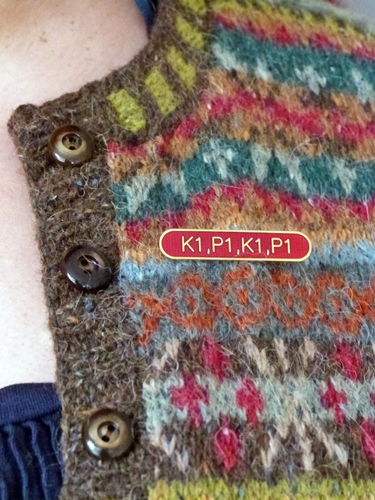The other week I gave a talk to the Kirkmichael’s Women’s Group about my life in knitting (it is a good life and one that I am happy to have, even if the path there was one of slings and arrows). The talk went well and I received some excellent questions. I’d like to share one of them with you.
How do you design patterns?
I design two types of patterns, essentially. I design for others, and I design for myself.
The first kind of pattern is a response to somebody else’s idea, product or moodboard — “seaside rendezvous: pastel colours, shells, beach, ice cream; summery garments and accessories perfect for wearing on holiday” — or maybe I have been asked to design a pattern for a new yarn. I like these sort of challenges because they push me outside my comfort zone. To use my seaside rendezvous example, I do not typically work with pastel hues and I will need to study the moodboard images hard before I know what atmosphere my design’s supposed to evoke. Spending time on Pinterest and Google Images is literally part of my job description!
The second kind of pattern is much more labour-intensive than you might expect. I tend to start with a story, and I need to figure out how to translate the story in my head into something on the needles, and eventually a wearable piece. A good example of this is my Rubrication shawl from This Thing of Paper. I knew I wanted a big, red shawl named after the practise of adding red lettering to books. I also knew I wanted to design something which would function as a metaphor for writing and creating. Eventually I created a pattern in which the stitches are reminiscent of quills and nibs and ink dripping down the leaf of a page (yes, I included leaves too). Working out how to interpret my story is a process full of swatching, of writing, and figuring out how to distill the core idea.
But how do I design the patterns?
Ah, the technical aspect! I teach design classes and this is what I tell my students: you need to have an idea and you also need to know how that idea works mathematically.
I do a lot of swatching and I have a few boxes just devoted to yarn for swatching as I need to have a lot of bases covered: 4ply handdyed, worsted-weight woolly yarn, mohair lace yarn, Shetland-style yarn in various colours .. Once I have my idea sketched, I’ll find a suitable yarn and work a swatch (at least 6” by 6”). Sometimes I like the resulting swatch, other times I have to knit a lot of swatches.
Once I like the swatch and I’ve blocked it, I start by working out the gauge. Depending upon the type of pattern I’m writing I might need to plug numbers into a spreadsheet (hello, garment designing) or I know roughly what kind of base numbers I’m working with (hello, shawl construction and increase ratio).
I always, always calculate and write the pattern before I start knitting, because I don’t want to waste time knitting up something which won’t work late in the knitting process. An example of this would be a bottom-up sweater where the stitch numbers don’t work with the yoke design. As a knitter, you will be able to fudge away those extra 7 stitches. As a designer, I need to know the right numbers.
Designing one-off patterns for myself is not something I do very often, but somehow I ended up doing just that last month. It felt like a combination of responding to a yarn pattern request and designing something because I had something stuck in my head.
The Hillhead hat pattern was a frivolous, unplanned pattern (I plan my pattern releases somewhat obsessively) that somehow wormed its way into the world. I had stuffed three balls of yarn into my suitcase while I was travelling and was doodling in my notebook. When I was a child, my gran knitted me a much-loved colourwork sweater and I was trying to recreate the stitch pattern.
The end result of all this unplanned activity was a hat. I put the work-in-progress on IG, worrying that I had knitted myself into a dead-end. Instead the kind comments encouraged me to continue and it was a design process much unlike anyone I’ve experienced before. I did not try to tell a story (apart from trying to remember a stitch pattern from my childhood) and most of the knitting was done whilst travelling with very little preparation beforehand.
On a slightly funny note (or maybe it speaks to the year I’ve had), this morning I found a folder with a collection’s worth of already-written and -charted patterns that I had forgotten all about! I will need to sift through the designs and see which ones are viable, then figure out where the ‘gaps’ in the collection are before designing into those gaps. But that sets me up for 2019 and all the things ahead.
Anyway, I hope that answered a few questions about my design processes and how my design brain works. I’m not as prolific as some designers, but I do work hard at getting you some nice things to knit!









 Wool Week is here.
Friends are in Shetland or down in London having all sorts of woolly fun.
Wool Week is here.
Friends are in Shetland or down in London having all sorts of woolly fun.
